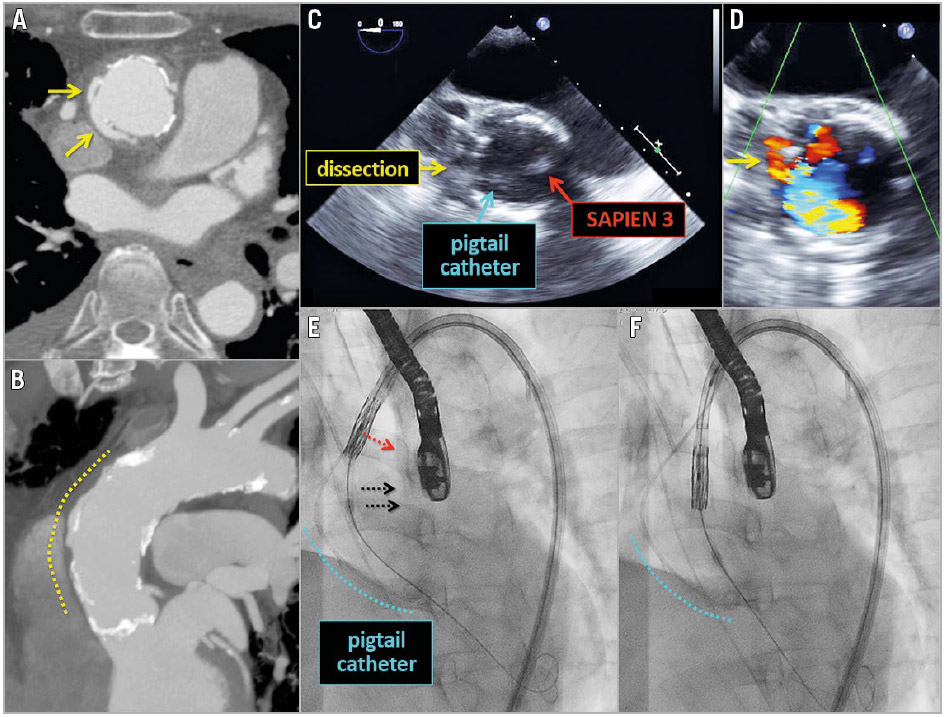Hiroyoshi Kawamoto*, MD; Toru Naganuma, MD; Sunao Nakamura, MD, PhD
AsiaIntervention 2019;5:70-71, DOI: 10.4244/AIJ-D-18-00031
Interventional Cardiology Unit, New Tokyo Hospital, Chiba, Japan
An 80-year-old male with severe aortic stenosis was admitted in a state of congestive heart failure. The patient’s medical history comprised myocardial infarction with a reduced left ventricular ejection fraction (EF 30%). Furthermore, computed tomography revealed a chronic aortic dissection (yellow arrows and dotted line) localised along the greater curvature of the ascending aorta (Panel A-Panel D, Moving image 1). We planned transfemoral transcatheter aortic valve replacement (TAVR) with a balloon-expandable bioprosthesis (SAPIEN 3; Edwards Lifesciences, Irvine, CA, USA) under general anaesthesia. We placed a pigtail catheter along the greater curvature of the ascending aorta as a guide to the chronic aortic dissection (blue arrows and dotted lines) (Panel C, Panel E, Panel F). Next, we successfully crossed the valve system without touching the aortic dissection using the distal flex system of the valve (dotted red arrow) and tension of the stiff wire (dotted black arrows) (Panel C-Panel F, Moving image 2-Moving image 4). While advancing the valve system, transoesophageal echocardiography facilitated monitoring of the position of the valve system and confirmed no extension of the chronic aortic dissection in the ascending aorta. In this case, active distal flexion of the valve delivery system offered a unique advantage and allowed controlled tracking of the valve while avoiding contact with the dissection plane. Furthermore, this case highlights the benefit of transoesophageal echocardiography even in the era of the minimally invasive TAVR procedure.
Conflict of interest statement
T. Naganuma is a proctor for Edwards Lifesciences and Medtronic.
The other authors have no conflicts of interest to declare.
Supplementary data
Moving image 1. Axial view of baseline computed tomography.
Moving image 2. Doppler transoesophageal echocardiography showing aortic dissection in the ascending aorta.
Moving image 3. Crossing the valve system through the chronic aortic dissection.
Moving image 4. Deploying the valve.
To download, please click below.

